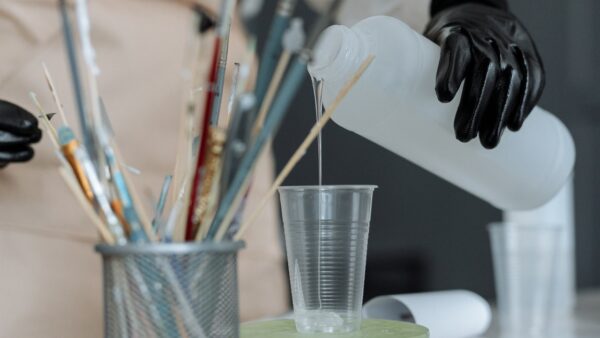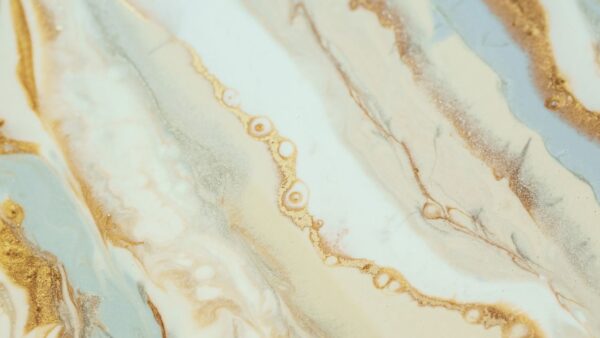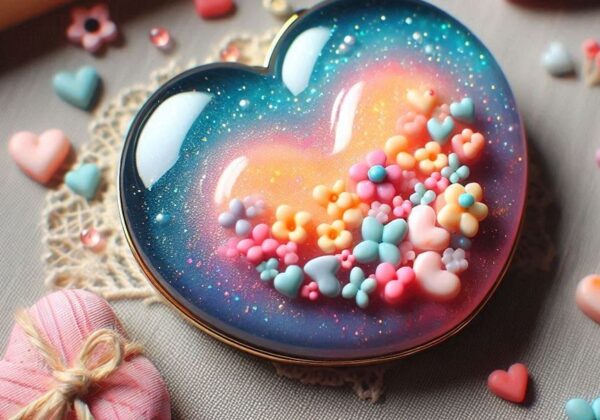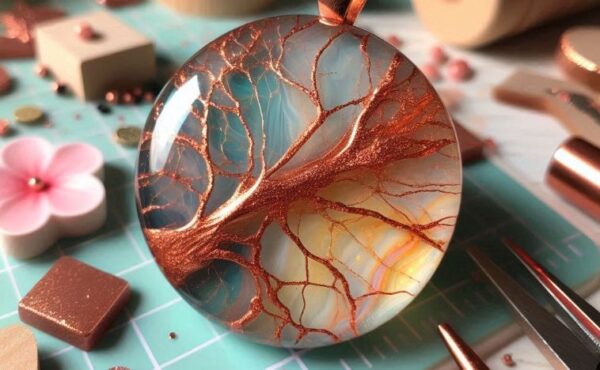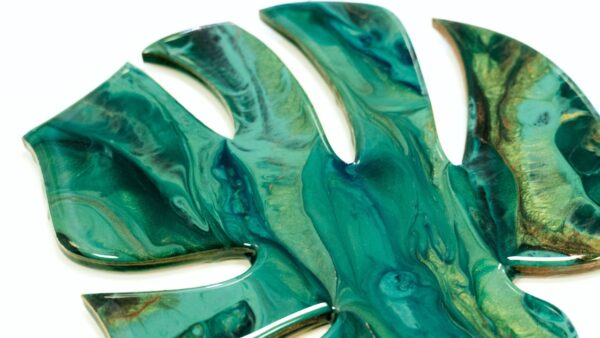How To Get A Matte Finish On Resin
This is how to get a matte finish on resin. Getting a matte finish on resin is all about surface texture. While resin naturally cures to a glossy, glass-like finish, you can make it matte by using sanding techniques, matte topcoats, or molds with a textured surface.
The finish depends on how light reflects off the resin. Glossy reflects light sharply, while matte scatters it, giving that soft, non-shiny look. It’s a popular choice for pieces that need a subtle, modern, or more muted appearance. You can even transition from gloss to matt for a really cool look.
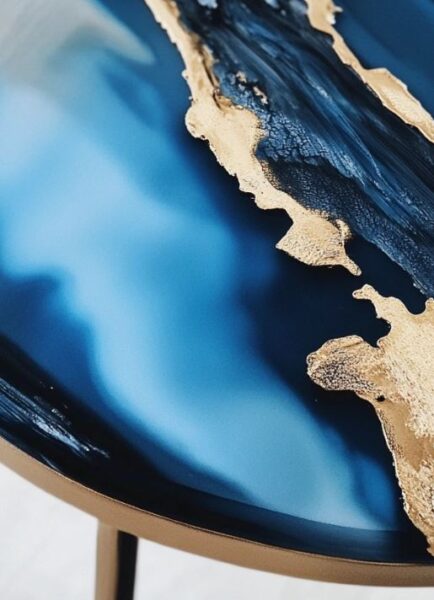
I first got inspired to try a matte finish after spotting a resin coaster at a craft fair. It had this smooth, velvety look that stood out from all the glossy stuff around it.
It felt high-end and handmade at the same time. Ever since then, I’ve been looking into different ways to get that look in resin projects and it’s easier than you might think.
You can do these techniques for small things, or larger DIY projects like resin tables. So, grab your crafting gear, and let’s turn those shiny pieces into some seriously cool matte creations! 🌟✨
How To Get A Matte Finish On Resin
1. Surface Sanding
Surface sanding is a way to get a matte finish on cured resin. Before sanding your final piece, practice with some test pieces first. Here’s how to sand resin to give it a matte finish.
First, wait until the resin has fully cured before attempting to sand it. Sanding too early may damage the resin’s integrity or create uneven surfaces.
Begin by selecting the grit of sandpaper. When you want a super smooth matte finish, then use a fine-grit sandpaper, typically around 400 grit or higher. The higher the grit number, the finer the sandpaper, resulting in a smoother finish.
If you are looking for a scuffed look, use a nail file or lower grit sandpaper.
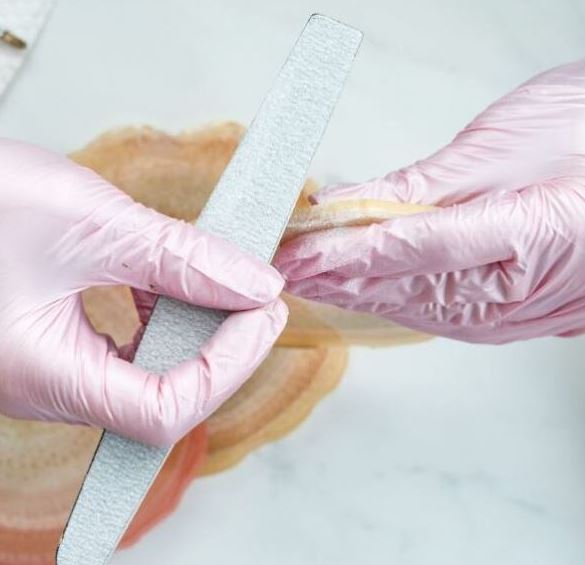
Gently sand the cured resin surface using the selected fine-grit sandpaper. The goal is to break up the smooth, glossy surface by creating tiny abrasions or scuffs. This process helps diffuse light, giving the resin a matte appearance.
Pay extra attention to any areas that may have a particularly high gloss, as these might require a bit more sanding to get an even matte finish.
After sanding, clean the surface to remove any sanding residue or dust with a lint free wipe.
See this complete guide on how to sand epoxy resin.
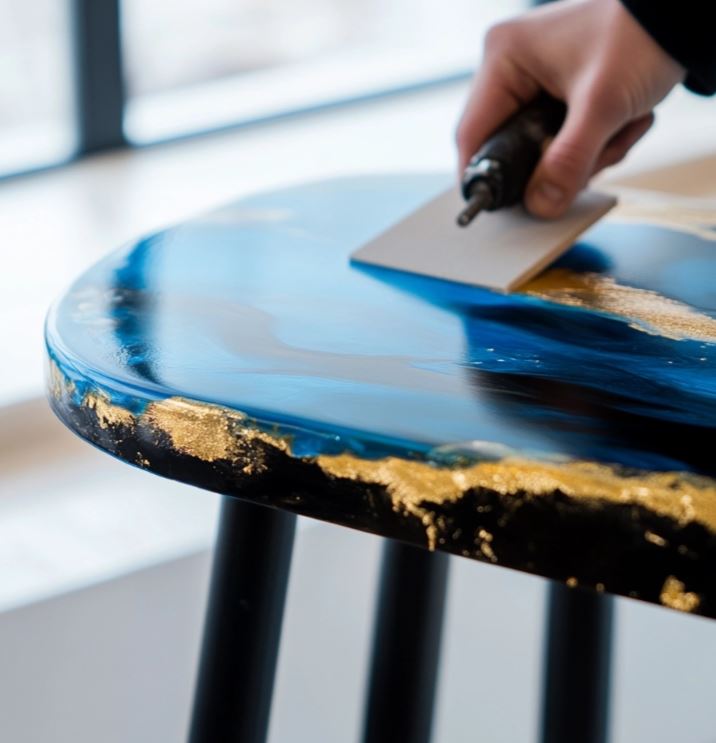
2. Brush On Matte Coating
Applying a matte varnish or sealer is way to get a non-reflective finish on cured resin projects.
Once the resin has fully cured, this technique involves adding a protective layer that not only enhances the matte appearance but also shields the creation from potential damage.
Begin by choosing a matte varnish or sealer that is specifically designed for use with resin. It’s important to select a product that is compatible with the type of resin you’ve used in your project.
Different resins may require different formulations of sealers, so checking the product specifications is a must for this. A non toxic formula that I like to use is Mod Podge.

Wait until the resin is completely cured before applying the matte varnish or sealer. Applying it too early can interfere with the resin’s curing process and may result in an uneven finish.
Follow the manufacturer’s instructions for applying the matte varnish or sealer. Typically, this involves using a brush, sponge, or applicator to evenly coat the surface of the cured resin.
Take care to apply an even layer for a consistent matte finish.
If you are using mod podge it’s not going to hold up to daily use and will eventually rub off depending what you are using it for, so do choose a varnish that meets your needs of the thing you are making.
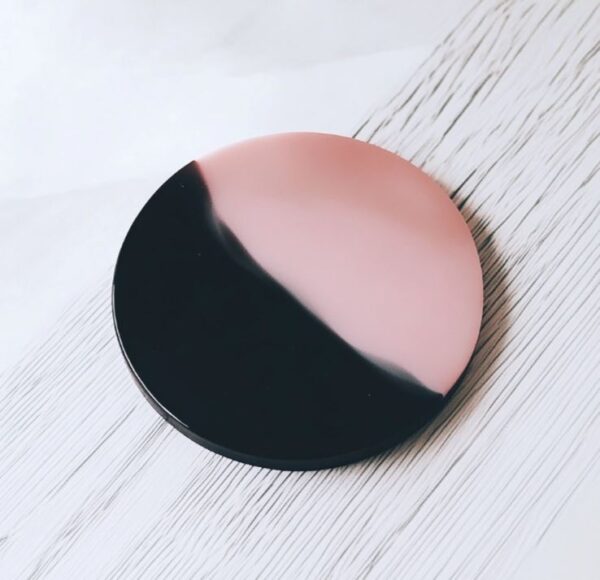
Allow the matte varnish or sealer to dry completely according to the product’s recommended drying time. This makes it so that the protective layer is fully set and adhered to the resin surface.
Once the matte varnish or sealer has dried, check the surface to see the desired matte finish has been achieved. You might want to put on a second coat.
Using Mod Podge Matte
★ ★ ★ ★ ★
My experience with using Mod Podge gives good results. Its formula dries clear and provides a matte appearance, giving projects a subdued and non-reflective finish.
With its adhesive and sealing properties, Mod Podge is great for creating a matte surface on a wide range of crafts and DIY projects like resin jewelry or for adding matte sections to artwork.
It’s important not to overwork the coating as this can cause cloudiness within the Mod Podge coating.
3. Spray On Matte Finishes
Use a spray-on matte finish product designed for crafts or artworks. These are often available in aerosol cans and can be sprayed onto the cured resin surface. Follow the instructions on the product for the best results.
Apply the spray-on matte finish only after the resin has fully cured. Waiting for complete curing makes sure that the resin is stable, and the matte finish adheres properly.
Before application, shake the aerosol can so that the product is well-mixed. When I’m using a spray can, I like to shake it up for about 2-3 minutes. I also like to spray a test to make sure that the spray nozzle is spraying without globs coming out. I’ve ruined pieces because this and it’s very frustrating!
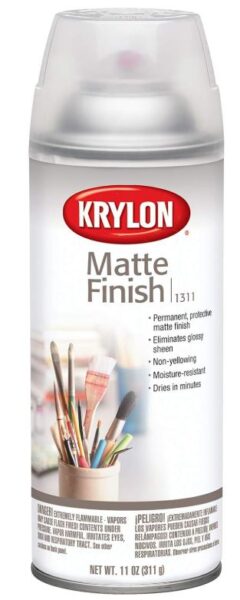
Hold the aerosol can at the recommended distance from the resin surface, as specified in the product instructions. Spray the matte finish in smooth, even strokes, covering the entire surface. Spray at a consistent distance so that the spray isn’t pooling in spots.
Allow the sprayed matte finish to dry completely before adding more coats.
Follow the instructions from the product manufacturer to get the best results and enjoy your newly transformed matte resin creation!
And always use a proper respirator when using spray varnishes. Use them outside whenever possible.

4. Matte UV Gel Polish
Here’s something that you might not have thought of yet. And that’s using a UV gel nail polish top coat to get a matte finish. I have been using these for many years and the results give a matt coating by brushing on the gel polish and then curing under a UV lamp. I absolutely love this hack!
This is great for little items like jewelry pieces and earrings. Just make sure you lightly sand and apply a base gel first. And to use this, you will need a UV lamp to cure the gel.

Why would someone want a matte finish on resin?
While resin is known for its high gloss finish, there are several reasons why someone might want to have a matte finish instead.
1. Personal Style
Matte finishes give a more subdued and understated aesthetic. Some individuals prefer the elegance and subtlety of a matte look over the boldness of high gloss. In some instances a matte finish is considered more high end than a high gloss finish.
2. Reducing Glare and Reflections
High gloss surfaces can be reflective, causing glare and reflections, especially in well-lit environments. Matte finishes help to minimize these reflections, making it more comfortable to view the piece from various angles.
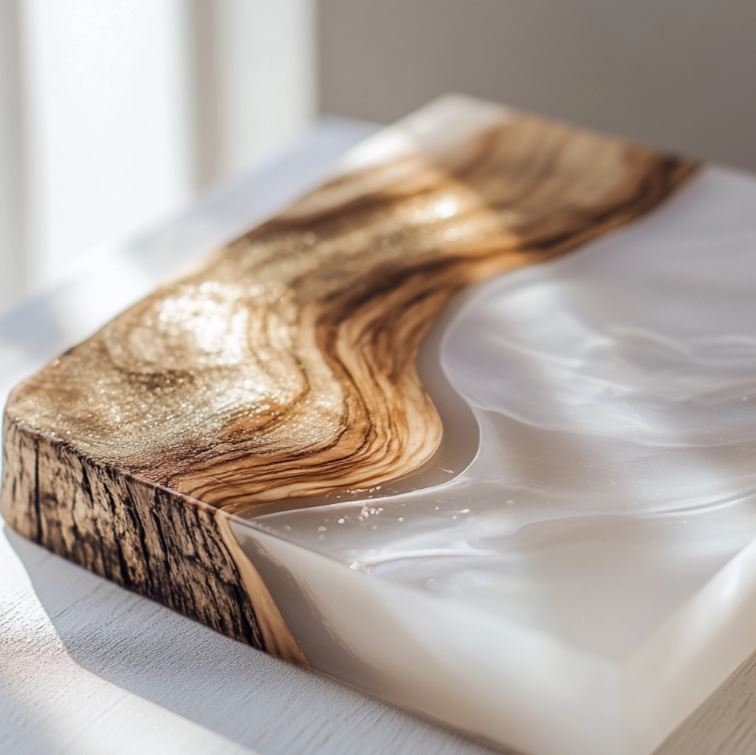
3. Creating a Vintage or Antique Appearance
Matte finishes can contribute to a vintage or antique appearance. This is particularly desirable for certain artistic or crafting projects where a weathered or aged look is wanted. Say for instance, you are working on a vintage style bookmark, you can add the matte coating and then distress the edges with a distress oxide. I love this look!
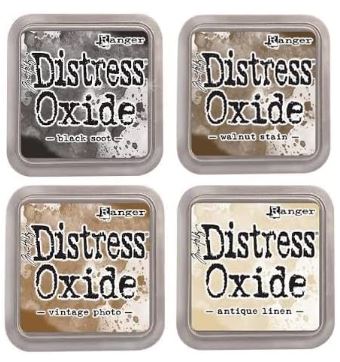
4. Enhancing Texture and Depth
Matte finishes can accentuate texture and depth. So if you are making a resin coaster or a piece of jewelry, you might want to have some matte accents on it in different places. A look that is really neat is to make a coaster and then tape the center and make the edges matte. It looks cool with glossy and matte together.
5. It Hides Small Flaws
A matte finish is a great way to hide little mistakes that sometimes happen with resin. Things like tiny bubbles, dust, or small scratches can be super noticeable on glossy surfaces because the shine makes them stand out.
But with a matte finish, the light scatters instead of reflecting straight back, so those small flaws are way less obvious.
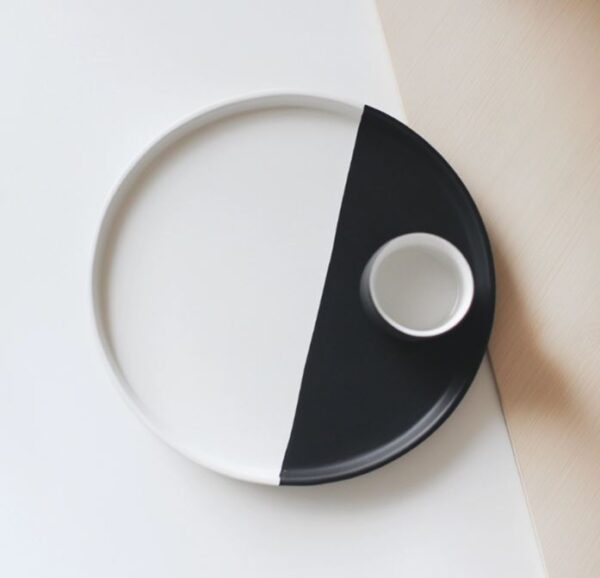
This makes matte a great choice if you’re still learning or if a piece didn’t turn out as perfect as you hoped. It helps your project still look polished without stressing over every tiny detail.
6. It Works Great with Soft or Earthy Colors
Matte resin pairs really well with muted tones like beige, sage green, dusty pink, or soft blues. The flat finish gives those colors a calm, natural vibe that glossy resin sometimes overpowers. If you’re going for a cozy, earthy, or organic feel in your work, matte helps bring out that soft look without the shine taking over.
FAQ’s about getting a matte finish on resin
1. Will Matte Finishes Affect the Durability of the Resin?
When applied correctly will not compromise the durability of the resin. In fact, matte varnishes and sealers often give enhanced protection against scratches and UV damage.
2. How Can I Remove Glossiness Without Damaging the Resin Surface?
Surface sanding is a method for removing glossiness without causing damage. Use fine-grit sandpaper. You might want to try a 1000 – 5000 grit sandpaper for polishing and see if that works for you. The only way to know for sure, is to do a test piece and see what grit you need.
Do a gentle and even sanding technique. It’s very important to wait until the resin has fully cured before sanding, and always clean the surface afterward.
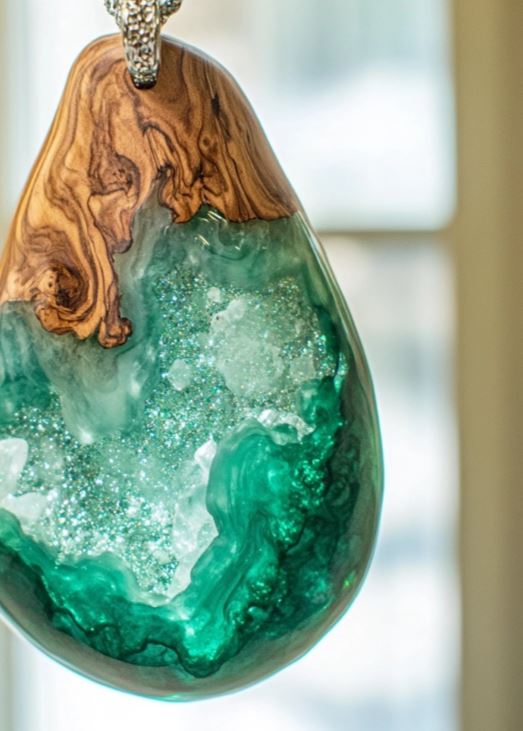
3. Can I Combine Different Matte Techniques for a Custom Look?
Absolutely! Many crafters experiment with a combination of matte techniques to achieve a unique and custom finish. For example, you can enhance the effect with a spray-on matte finish or additional surface sanding. Just be sure to test on a small sample first.
4. Are Matte Finishes Suitable for All Types of Resin Projects?
Matte finishes can work well for a variety of resin projects, including jewelry, resin coasters, art pieces, and more.
However, consider the specific aesthetic and practical requirements of your project. Matte finishes are particularly popular for projects where a subdued, vintage, or textured look is desired.
Remember, it’s always a good idea to test any matte technique on a small, inconspicuous area before applying it to your entire project.
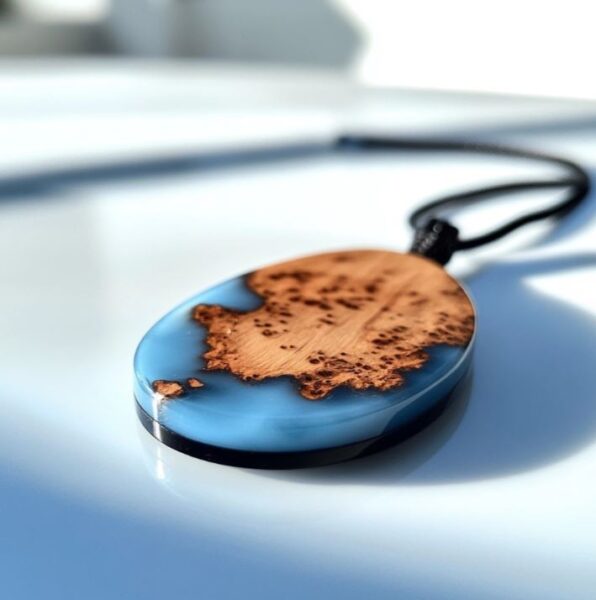
Thanks for taking the time to learn about matte finishes on resin! I hope this guide has sparked your creativity and given you the know how to get that perfect matte look for your resin projects.
More resin ideas:

